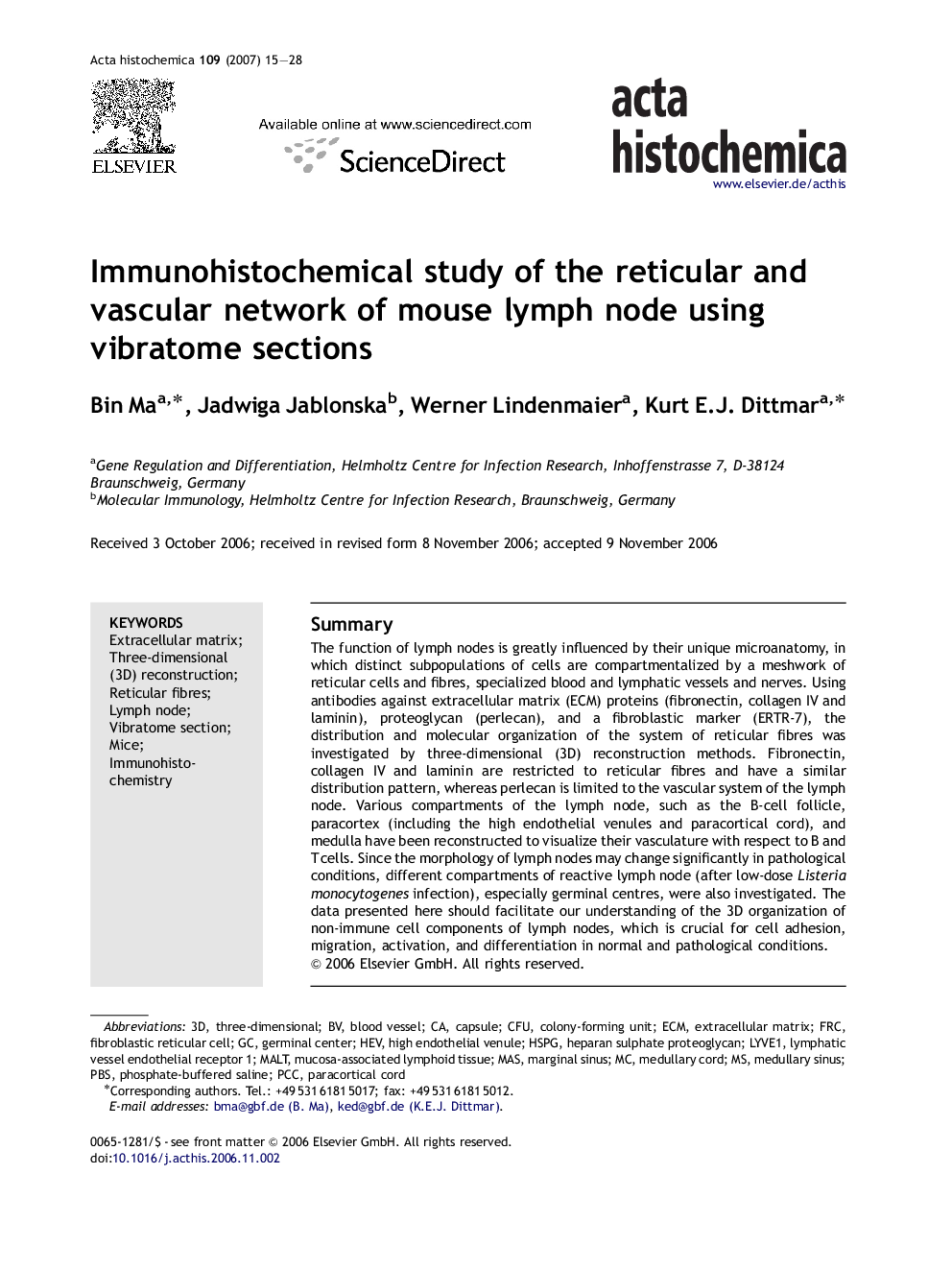| Article ID | Journal | Published Year | Pages | File Type |
|---|---|---|---|---|
| 1924083 | Acta Histochemica | 2007 | 14 Pages |
Abstract
The function of lymph nodes is greatly influenced by their unique microanatomy, in which distinct subpopulations of cells are compartmentalized by a meshwork of reticular cells and fibres, specialized blood and lymphatic vessels and nerves. Using antibodies against extracellular matrix (ECM) proteins (fibronectin, collagen IV and laminin), proteoglycan (perlecan), and a fibroblastic marker (ERTR-7), the distribution and molecular organization of the system of reticular fibres was investigated by three-dimensional (3D) reconstruction methods. Fibronectin, collagen IV and laminin are restricted to reticular fibres and have a similar distribution pattern, whereas perlecan is limited to the vascular system of the lymph node. Various compartments of the lymph node, such as the B-cell follicle, paracortex (including the high endothelial venules and paracortical cord), and medulla have been reconstructed to visualize their vasculature with respect to B and T cells. Since the morphology of lymph nodes may change significantly in pathological conditions, different compartments of reactive lymph node (after low-dose Listeria monocytogenes infection), especially germinal centres, were also investigated. The data presented here should facilitate our understanding of the 3D organization of non-immune cell components of lymph nodes, which is crucial for cell adhesion, migration, activation, and differentiation in normal and pathological conditions.
Keywords
ECMPBSLYVE1CFUFRCThree-dimensionalThree-dimensional (3D) reconstructionPCCHEVHSPGImmunohistochemistryMucosa-associated lymphoid tissueMASBlood vesselfibroblastic reticular cellExtracellular matrixMaltPhosphate-buffered salineGerminal centerMiceHeparan sulphate proteoglycancolony-forming unithigh endothelial venuleCapsuleLymph node
Related Topics
Life Sciences
Biochemistry, Genetics and Molecular Biology
Biochemistry
Authors
Bin Ma, Jadwiga Jablonska, Werner Lindenmaier, Kurt E.J. Dittmar,
